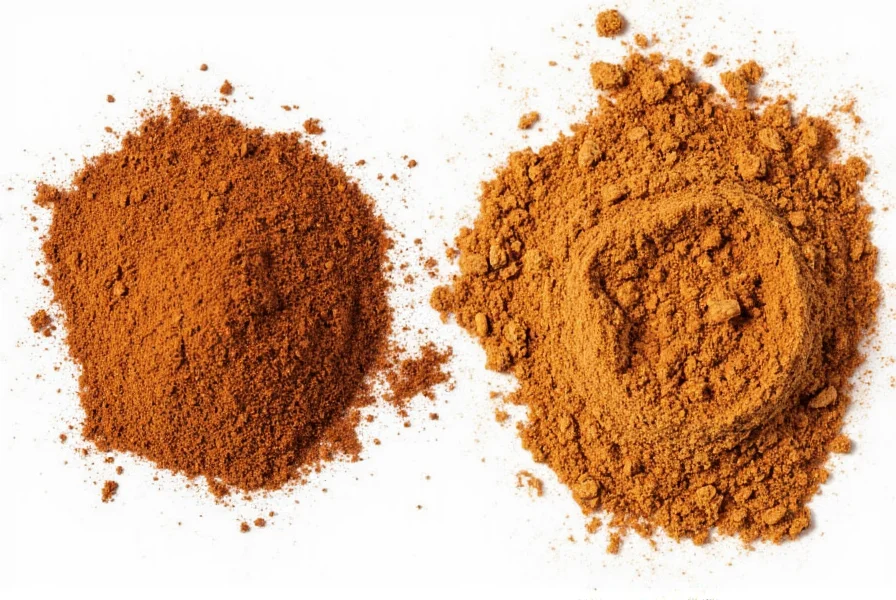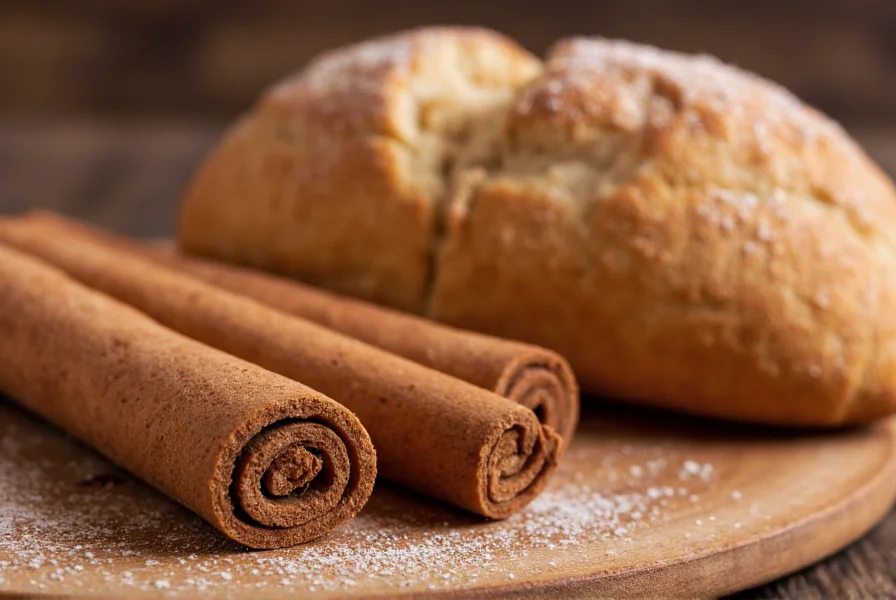Understanding the precise characteristics of baker's cinnamon helps home bakers achieve professional-quality results. Unlike standard grocery store cinnamon that's usually 100% Cassia (also called Chinese cinnamon), baker's cinnamon represents a carefully calibrated mixture preferred by culinary professionals for its reliability and nuanced flavor profile.
What Exactly Is Baker's Cinnamon?
Baker's cinnamon isn't a specific cinnamon variety but rather a proprietary blend developed specifically for baking applications. Major commercial suppliers like McCormick, Spice Islands, and specialty baking suppliers create their versions, but the standard formulation typically combines equal parts Ceylon cinnamon (from Sri Lanka) and Cassia cinnamon (from China or Indonesia).
This balanced approach addresses the limitations of using either cinnamon type alone. Cassia offers robust, familiar warmth but can become bitter when baked, while Ceylon provides delicate complexity but lacks sufficient punch for many baked goods. The 50/50 ratio creates what professional bakers call "the Goldilocks zone" for cinnamon in baked applications.
| Cinnamon Type | Flavor Profile | Best Baking Applications |
|---|---|---|
| Baker's Cinnamon (50/50 blend) | Balanced sweetness, moderate warmth, complex notes | Most cookies, cakes, muffins, cinnamon rolls |
| Cassia (Chinese) Cinnamon | Strong, spicy, slightly bitter | Spice cakes, gingerbread, hearty desserts |
| Ceylon (True) Cinnamon | Mild, sweet, citrusy notes | Fine pastries, delicate cakes, custards |
Why Baker's Cinnamon Outperforms Single-Origin Varieties in Baking
The science behind baker's cinnamon's effectiveness lies in how different cinnamon compounds react to heat. Cassia contains higher levels of cinnamaldehyde (60-80%), which gives that familiar cinnamon punch but can become harsh when baked. Ceylon contains only 50-60% cinnamaldehyde but offers more eugenol (1-5%), which provides subtle clove-like notes that complement other spices.
When you bake with pure Cassia, the high cinnamaldehyde concentration intensifies unpleasantly, while pure Ceylon often disappears entirely in complex recipes. The baker's blend maintains flavor integrity through the baking process, delivering consistent results batch after batch—a critical factor for professional bakeries where recipe reliability matters.

Identifying Authentic Baker's Cinnamon Products
Not all products labeled "baker's cinnamon" follow the traditional 50/50 formulation. Savvy shoppers should check ingredient lists for:
- "Ceylon and Cassia cinnamon" rather than just "cinnamon"
- Avoid products listing "cinnamon flavor" or "natural flavors" as primary ingredients
- Purchase from reputable spice suppliers known for baking ingredients
Professional bakers recommend checking the color—authentic baker's cinnamon typically appears medium reddish-brown, darker than pure Ceylon (light tan) but lighter than pure Cassia (deep reddish-brown). The texture should be fine and consistent without clumps.
When to Substitute Baker's Cinnamon
If you can't find baker's cinnamon, create your own blend using equal parts Ceylon and Cassia. For most cookie and cake recipes, this substitution works perfectly. However, certain applications require adjustments:
- For delicate pastries: Use 75% Ceylon, 25% Cassia
- For hearty spice cakes: Use 25% Ceylon, 75% Cassia
- For cinnamon rolls: Stick to traditional 50/50 ratio for optimal flavor balance
Never substitute pumpkin pie spice for baker's cinnamon in recipes specifically calling for it, as the additional spices (ginger, nutmeg, allspice) will alter the intended flavor profile.
Proper Storage for Maximum Flavor Retention
Cinnamon loses potency rapidly when exposed to air, light, and heat. To maintain your baker's cinnamon's quality:
- Store in an airtight container away from heat sources
- Keep in a cool, dark cupboard (not above the stove!)
- Grind whole sticks only when needed for maximum freshness
- Replace ground cinnamon every 6-12 months for optimal baking results

Recipes That Benefit Most from Baker's Cinnamon
Certain baked goods particularly showcase baker's cinnamon's balanced profile:
- Classic snickerdoodle cookies (where cinnamon-sugar coating needs balanced flavor)
- Cinnamon rolls (complex filling requires nuanced spice)
- Apple pie (complements fruit without overwhelming)
- Carrot cake (blends perfectly with other warm spices)
- Breakfast muffins (delicate crumb requires subtle spice)
Professional pastry chefs note that baker's cinnamon makes the most significant difference in recipes where cinnamon appears as a primary flavor rather than just a background note. In chocolate-based recipes, for example, pure Cassia often works better as its stronger profile cuts through rich cocoa.
Understanding Cinnamon Quality Indicators
When selecting baker's cinnamon products, look for these quality markers:
- Color consistency: Uniform medium reddish-brown without dark spots
- Aroma intensity: Strong but not overwhelming scent when opened
- Particle size: Fine, consistent grind without large chunks
- Moisture content: Should flow freely, not clump when poured
Reputable suppliers often include harvest dates or "best by" dates, which help ensure freshness. Avoid products without clear origin information or expiration dates, as stale cinnamon dramatically affects baked goods' flavor.
FAQ: Baker's Cinnamon Questions Answered
Is baker's cinnamon the same as regular cinnamon?
No, baker's cinnamon is a specific 50/50 blend of Ceylon and Cassia cinnamon, while regular grocery store cinnamon is typically 100% Cassia. The blend creates a more balanced flavor profile ideal for baking applications where single-origin cinnamon might create flavor imbalances.
Can I substitute regular cinnamon for baker's cinnamon in recipes?
Yes, but with adjustments. For most baking applications, use 75% regular (Cassia) cinnamon and 25% Ceylon cinnamon as a substitute. In delicate pastries, increase the Ceylon proportion. Pure Cassia may become bitter when baked, while pure Ceylon often lacks sufficient flavor intensity.
Why do professional bakers prefer baker's cinnamon?
Professional bakers use baker's cinnamon for its consistent flavor profile and reliable performance in baked goods. The 50/50 blend maintains flavor integrity through the baking process, preventing the bitterness that can develop with pure Cassia or the flavor loss that occurs with pure Ceylon, ensuring recipe consistency batch after batch.
How long does baker's cinnamon stay fresh for baking?
Properly stored in an airtight container away from light and heat, ground baker's cinnamon maintains optimal baking quality for 6-12 months. Whole cinnamon sticks last 2-3 years. For best results in baking, replace ground cinnamon annually and always check aroma before use—stale cinnamon lacks the characteristic sweet warmth essential for quality baked goods.
Does baker's cinnamon contain any additives?
Authentic baker's cinnamon contains only Ceylon and Cassia cinnamon with no additives. Some commercial products may include anti-caking agents like calcium silicate (up to 2%), but premium baking blends remain pure. Always check ingredient labels—products listing "cinnamon flavor" or additional spices aren't true baker's cinnamon blends.











 浙公网安备
33010002000092号
浙公网安备
33010002000092号 浙B2-20120091-4
浙B2-20120091-4